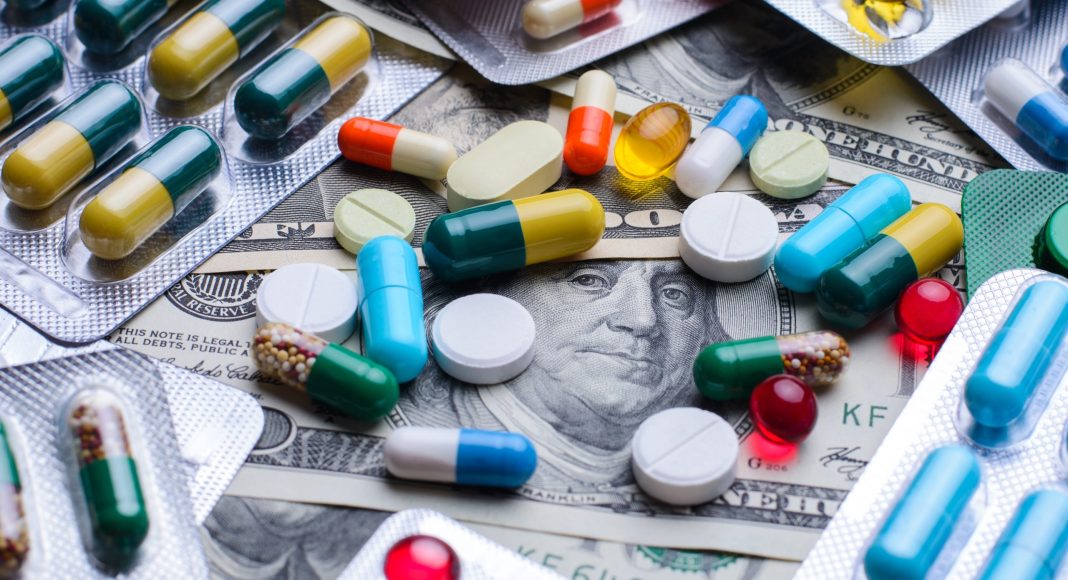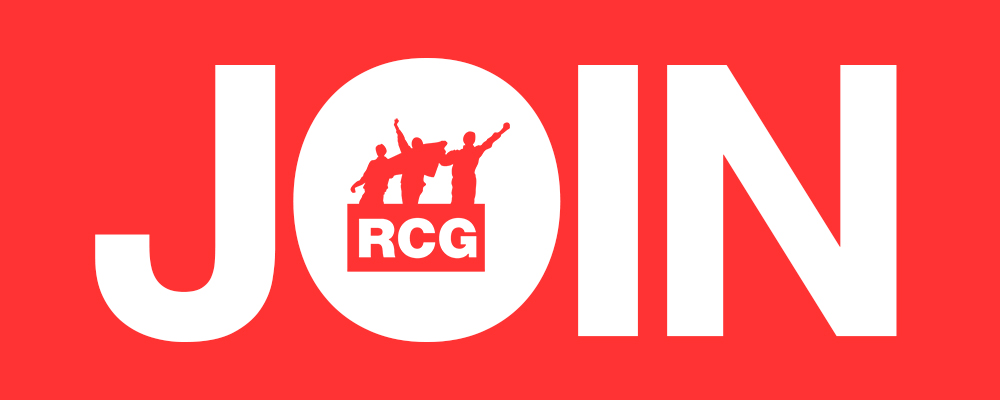From 1999 to 2021, nearly 645,000 people died in the United States from overdoses involving opioids, both prescribed and illicit, according to the US Centers for Disease Control and Prevention. Of the 110,037 deaths in 2023, over 74,000 were due to drug mixtures containing fentanyl, a synthetic opioid which has been approved by the FDA for medical pain relief since the 1960s and is fifty times stronger than heroin. Just two milligrams can be an overdose. The number of opioid deaths has since decreased to 80,391 in 2024, but they still comprise around 75% of all drug overdose deaths in the US. Overdose is the leading cause of death for Americans aged 18 to 44. ANNIE O’CONNER reports.
The saturation of capitalist societies by pharmacological products, legal and illegal, is no accident. Commodities know no automatic moral code. The drive to obtain the profit contained within them is the driving concern of their producers and distributors, legalised or not. The daily exploitation of the working masses in the US, and the ill health, despair and demoralisation that result, turn many to seek oblivion in short-term solutions. Religion, alcohol and nicotine have long been a means by which the propertied classes could dull the pain and anxieties of those whose labour power they exploit. Pharmacological products have been added to the ruling class’s prescriptions.
Opiates of the people
The wider spread of opiates to north America and Europe in the 20th century followed the Opium Wars inflicted on China by Britain (1839-42 and 1857-58). In the 1920s-30s interwar period, illicit drug use spread with the economic depression. During World War II, US troops received stimulants like amphetamines and methamphetamines, to enhance ag- gressiveness and suppress appetite. In the 1960s and 1970s, the Vietnam War saw US troops using cannabis and then heroin to suppress fear and trauma, with use then spreading to the US itself. The CIA directly aided Laotian air transport of opium during that war to combat communism in Laos.
In the US the cocaine trade in the 1970s and ’80s brought immense wealth to Miami. The US ruling class had quickly learned to combine the use of drugs in its foreign oppression with their use against its own working class. In the 1980s a San Francisco Bay Area drug ring sold tons of cocaine from Colombian gangs to the Crips and Bloods gangs of Los Angeles, proliferating crack addiction in the black communities. These operations funnelled millions in profits to the ‘Contras’, the CIA’s terrorist army designed to destroy Nicaragua’s leftist Sandinista revolution.
Openly undermining the health and morale of the working class is, of course, disguised by the laws on drugs. By 2023 there were 69,000 prisoners held for drug offenses, 47% of all federal prisoners, plus another 21,000 held separately by the US Marshall services for such crimes. At home and abroad, drug use and policing are a weapon of the ruling class.
Big pharma and the health crisis
The disastrous absence of proper medical provision to 40 million workers in the US has led to a blend of both legal prescription and ‘self-medication’. The US consumes 75% of the world’s prescription drugs and over 8.6m Americans reported abusing prescription medications in 2023. The US opioid crisis of the 1990s- early 2000s was driven by Purdue Pharma, owned by the Sackler family, aggressively marketing OxyContin, approved in 1995 by the FDA though its addictiveness was concealed. The result was hundreds of thousands of deaths and millions more affected by painkiller addiction. Of the 399,000 deaths linked to opioids between 1999 and 2017, 218,000 were linked to prescription opioids. The US Government dismissed the issue by fining Purdue only $654m for ‘misbranding’ in 2007.
1.7 million Americans were addicted to prescription opioids in 2017, with 80% of heroin users reporting their addiction started that way. In 2015 Purdue settled $24m with Kentucky over widespread OxyContin abuse. By January 2019, 36 states were suing Purdue Pharma. The Sackler family reached a settlement of $270m with the state of Oklahoma and are still contesting cases.
The United States makes up 4.4% of the world’s population yet consumes over 80% of the world’s opioids. Pharmaceutical companies benefit not only from the manufacture and prescription of addictive synthetic drugs, but also from the consequences. While the US opioid painkiller market was worth an estimated $7.33bn in 2024, the emerging market for drugs that treat opioid side effects, addiction and overdose is already worth half as much.
Synthetic opioids
The US drug crisis has entered a new era driven by potent synthetic opioids such as fentanyl. Natural or semi-synthetic opioids such as morphine, codeine or heroin can be produced from the opium poppy plant with minimal chemical processing. Increasingly these drugs are being replaced by or cut with synthetic opioids which are synthesised entirely in a laboratory. Access to these requires either the purchase or theft of the chemical precursors or finished product from pharmaceutical companies, or the diversion or misuse of legitimately prescribed medication.
Methadone, another synthetic opioid prescribed as a medication for addiction, is a lifesaving treatment for recovering addicts. Methadone clinics can cost up to $76 per day per patient and cost over $1bn a year for the US government to subsidise. In a concession to his voting base, US President Donald Trump recently invoked the Most Favoured Nation clause for imported drug prices, meaning the federally administered Medicare programme will pay no more to import prescription drugs than the lowest price charged by any developed nation.
The recent decrease in opioid overdose deaths has been attributed to the availability of naloxone, an emergency medication that can reverse the effects of an overdose. Before naloxone was generally available, its sole producer Hospira (now owned by Pfizer) increased its price by 1,000% in one year. The soaring prices of naloxone caused thousands of preventable overdose deaths. Even now, equipment such as nasal spray and auto-injector versions still exist under patent monopoly, so can be sold at astronomical prices. Additionally, emergency workers are increasingly finding that naloxone is simply not strong enough to rescue opioid overdoses caused by the extremely potent fentanyl.
The racist ‘War on Drugs’
Racism was evident in the first US laws in the 1880s regulating drug use in response to epidemic addiction to opiates. Though addiction was mainly amongst white middle to upper classes, ‘immoral opium dens’ were used to whip up resentment towards the Chinese immigrant population and support the Chinese Exclusion Act of 1882, banning Chinese immigration for ten years. Drug policy has only become increasingly punitive and racist since.
Today, even though drug use is statistically similar between races, black men are 13 times more likely than white men to be incarcerated for drug offenses, and black individuals make up 36% of those currently serving time for drug offenses despite making up 14% of the US population. Black and Latino people are on average nearly four times as likely to be stopped and searched for drugs compared to white people, in some states ten times more.
Domestically the pretext of combatting the illicit drug trade has long been used systemically by the US ruling class to employ intelligence operations and incarceration targeting black and immigrant communities, and especially to crush progressive social justice movements. The FBI used drug deals to discredit the Black Panther Party and its growing popularity in the 1960s.
The ‘War on Drugs’ unofficially began during Nixon’s presidency in the early 1970s. The Drug Enforcement Agency (DEA) was created in 1973. The same year, New York Governor Nelson Rockefeller passed the nation’s first mandatory minimum drug laws, ensuring the imprisonment of working-class people convicted of drug offences.
John Ehrlichman, former Nixon aide convicted of conspiracy, obstruction of justice and perjury, revealed:
‘The Nixon campaign in 1968, and the Nixon White House after that, had two enemies: the anti-war left and black people. You understand what I’m saying? We knew we couldn’t make it illegal to be either against the war or black, but by getting the public to associate the hippies with marijuana and blacks with heroin, and then criminalizing both heavily, we could disrupt those communities. We could arrest their leaders, raid their homes, break up their meetings, and vilify them night after night on the evening news. Did we know we were lying about the drugs? Of course we did.’
Outside these domestic operations, the US has openly interfered in Latin America as part of the ‘War on Drugs’. When the US announced Plan Colombia in Latin America in 2000, it was a cover for destroying revolutionary opposition to imperialism, by training Colombian police forces in multi-million-dollar programmes. In 2009 the US Clinton administration was integral to deposing democratically elected progressive president of Honduras Manuel Zelaya and replacing him with the kingpin of a drug trafficking empire, Juan Orlando Hernandez.
This year President Trump, to protect the US manufacturing industry, imposed steep tariffs on China, citing the latter country’s failure to prevent the export of chemicals used in the production of fentanyl, and on Mexico for allegedly failing to prevent criminal gangs smuggling the finished product into the United States.
Trump has signed several executive orders declaring national emergencies at the US northern and southern borders with the excuse of preventing drug trafficking. The drugs public health crisis is a perfect cover for the enhanced militarised offensive against migrants. Attributing the US drug crisis to China and Latin American countries is blaming the supplier for meeting demand, displacing responsibility away from the consumption of the imperialist states. In response to the tariffs, China has said ‘the US needs to view and solve its own fentanyl issue’.
Making a killing
Imperialist countries have never had any real intention to combat the illicit drug market because they depend on it. FRFI has previously examined the economic conditions that made cocaine the most profitable industry in Latin America in the 1990s: ‘Were the “War on Drugs” to be just that, it would collapse at least three [South] American economies, trigger debt repayment defaults and bring imperialist client governments crashing to their knees’ (Trevor Rayne, ‘Cocaine Capitalism’, FRFI 92). Latin American economies are crushed by loans, debt repayments, and unequal exchange. Millions live in poverty. Engaging in the illicit drug trade with US clients enables local capitalists to accumulate capital and access to the dollar prevents national economic collapse.
The global illicit drugs trade is worth about $360bn each year. Imperialist banks are more than willing to process the cartels’ blood money for profit. In 2010 Wells Fargo reached a settlement with the US state for allowing $378bn in illicit funds to pass through its accounts. In 2012 HSBC paid a fine to settle allegations that it knowingly allowed cartels to launder money through its accounts, then again in 2021. The same year, NatWest was found guilty of laundering millions of pounds. US bank TD was fined $3bn in 2024 for drug cartel money laundering. In the decade after the 2008 financial crisis, the largest thirteen US and European banks were fined a total of $230bn – a fraction of their overall profits.
Attack on working class
Capitalism has created the social conditions that are causing a never-ending drugs crisis: the drugs industry –
illegal and legal – creating a wasteland of corruption, gangsterism and political manipulation, taking every opportunity to profit, and worsening immeasurably the conditions of the already exploited masses. The subsequent wars on drugs have sought to repress and divide the working class and maintain imperialist domination. Only an organised socialist movement can topple this cruel system to provide adequate living standards and healthcare that eradicate drug dependency.
Fight Racism! Fight Imperialism! 307, August/September 2025




